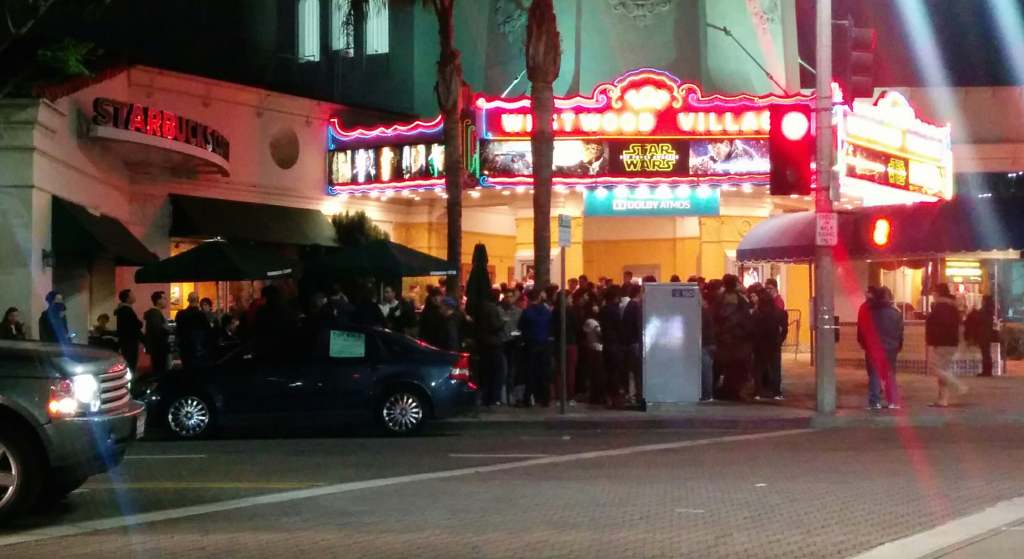It has been a long year since the teaser trailer for Star Wars: Episode VII was first released and the opening showing of the film prior to the film’s wide release has finally arrived. But the wait does not end there! Here is a picture of a group of moviegoers queuing to enter the theatre.
Some enthusiastic fans have waited in line for over 5 hours to claim a good seat in the theatre. While we may not all be such committed Star Wars aficionados, any of us who choose to watch the film opening weekend will likely endure some form of waiting.
To say the least, waiting in lines can be boring, stressful, and anxiety inducing. The psychology of queuing is one line of research that focuses on factors that affect perceptions of the wait time and its influence on custom satisfaction. This body of research has now identified several strategies that help make waiting better.
1. Distract yourself.
Complaints about waiting for elevators almost cease after mirrors were installed around the area, giving hotel guests something to do (e.g., fix their hair, check out their outfits) while waiting. Occupied time (looking at yourself and others in the mirror) feels shorter than unoccupied time (standing for the elevator) and therefore makes the waiting time go by faster. Listen to podcasts, play Candy Crush, read a book, or engage in some other fun activity to fill up the time that you are waiting.
2. Go with a group.
Waiting with a group is more pleasant than waiting alone. This may be related to tip 1.
3. Turn around.
Research has found that customers feel more positive about their waiting experience as the number of people waiting behind them increases. This may be due to us making downward social comparisons to those waiting.
4. Be fair. Don’t cut! For lines that are organized as a first-come-first-serve basis, our feelings about waiting are influenced by our perception of fairness. It is especially upsetting for die-hard fans if they find out that a group of friends is holding a spot for a late arriver or if a group of friends swap out and take turns waiting. This was true regardless of whether the fans are close to the front or back of the line.
5. Take deep breaths—you’ll get a seat.
Anxiety is a common feeling while waiting in line and it makes the perception of time feel longer. In open seating situations, some of the anxiety may stem from the potential fear of not getting a (good) seat. Some anxiety may stem from the uncertainty of the wait time. If you know when the showing will begin, use a timer on your phone to countdown the wait time to make it a finite period that will end.
6. Get pumped! People feel that waiting is more worthwhile if they are excited about the product or experience. Watching or reading interviews about Star Wars can help remind you that the wait is more than worth the awesomeness of the film.
And of course, remember the force is strong in you!
Further reading: • Katz, K. L., Larson, B. M., & Larson, R. C. (1991). Prescription for the waiting-in-line blues: Entertain, enlighten, and engage. MIT Sloan Management Review, 32(2), 44. • Helweg‐Larsen, M., & LoMonaco, B. L. (2008). Queuing among U2 fans: Reactions to social norm violations1. Journal of Applied Social Psychology, 38(9), 2378-2393. • Zhou, R., & Soman, D. (2003). Looking back: Exploring the psychology of queuing and the effect of the number of people behind. Journal of Consumer Research, 29(4), 517-530. • Maister, D. H. (1984). The psychology of waiting lines. Harvard Business School.
